Bed sheets that are made for you

Your bed should be the most comfortable thing in your household. So, choosing the right bed sheets is very important. Buying sheet sets makes life easier as it includes a top or a flat sheet, a fitted sheet and 1 or 2 pillowcases.
However, getting the right sheet set for your bed can be difficult. There are a lot of choices in the market and making the right decision will ensure that you get a good night’s sleep. This sheet sets buying guide gives you step-by-step instructions on how to shop for bed sheets and sheet sets.
Everything you need to know about buying sheet sets
Due to the huge variety of bed sheets available in the market, it is important to be aware of certain things when buying one. Texture, weave, thread count, size, and seasonal use are some of the categories you need to keep in mind when shopping for sheet sets.
While this may seem a little excessive, it is important to note that bed sheets are something you use on a daily basis. So, making sure that you buy the best of the best will be beneficial for you in the long run.
Size

Buying the right size of sheet sets is crucial. This is the reason why we suggest measuring the size of your mattress before you buy a sheet set. You may buy a queen bed sheet set for your queen bed and realise that the fitted sheet is a tad bit small or meant for king size bed sheets.
To be on the safer side measure your mattress. Always measure the depth of your mattress, since that is usually the reason why fitted sheets don’t fit.
Finding the right size fitted sheet is most important since they need to fit perfectly. Read up on the measurements provided on the sheet set. Measurements for each item are given individually making it easier for you to compare the size of your mattress to the fitted sheet in the set. Also, always check the depth of the fitted sheet. The depth of the mattress and the fitted sheet need to match for a perfect fit; if they don’t match, they won’t fit.
You can also refer to this list of different sheet set sizes available in the market.
| Type of Bed | Fitted Sheet Size | Flat/Top Sheet Size |
| Single | 91 x 193 x 40 cm |
180 x 225 cm |
| King Single | 107 x 203 x 40 cm | 200 x 260 cm |
| Double | 137 x 193 x 40 cm | 230 x 254 cm |
| King | 182 x 203 x 40 cm | 260 x 274 cm |
| Queen | 152 x 203 x 40 cm | 240 x 260 cm |
| Super King | 183 x 203 x 50 cm | 300 x 274 cm |
| Super Queen | 152 x 203 x 50 cm |
260 x 274 cm |
Thread Count

Don’t be intimidated by terms like thread count when you’re buying sheet sets. Thread count determines the feel, finish and durability of the fabric.
The easiest way to understand thread count in sheets is the number of horizontal and vertical threads that comprise 1 square inch of the fabric. You may have heard that a higher thread count gives you good quality bed sheets. However, that is not true. While a higher thread count ensures a stronger, more long-lasting weave that gives the fabric a smooth feel, it actually depends on the fineness of the yarn.
A finer yarn will result in a higher thread count as more threads can fit in an inch. The scale of thread count differs with different fabrics as well. To understand the perfect thread count for each fabric, you have to understand the materials and weave.
Material
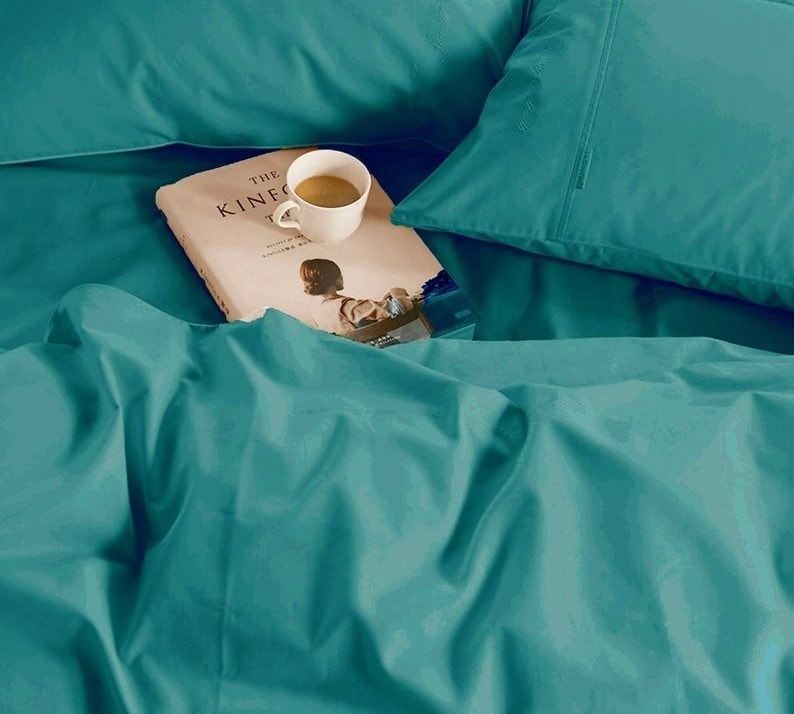
The material you choose for your sheets can make all the difference. This is where your personal preferences come in. Different materials cater to different needs. There are materials that are perfect for certain weathers, materials that are cheaper, more durable materials and so on.
Furthermore, each material has a different weave and yarn which makes a huge difference to the thread count. As we mentioned before, a higher thread count might not always be good and the difference in the material’s yarn determines the thread count.
Linen

A very popular material especially in areas with hot and humid weather. Linen can easily absorb moisture and is quite a breathable material allowing it to dry up very quickly as well. This material almost has a cooling effect because of its moisture absorbing qualities. Furthermore, it is very durable.
While linen is actually considered eco-friendly and is a very long-lasting material, you do not want a higher thread count for it. The yarn is thicker, resulting in an absorbent material, but a high thread count in linen sheets is bad news. Due to the thick yarn, a higher thread count would make your sheets feel rough. Go for a thread count lower than 200 for sheets that feel like cool clouds.
Cotton

Slightly softer compared to linen but very similar in qualities, Cotton is a great material for hot climates as well and can be very durable. Furthermore, there are different types of cotton available in the market, so you have a lot of choices. However, certain factors determine whether the cotton sheets you are buying are good or not.
You need to pay attention to the yarn and its quality. If it is not already mentioned on the sheet sets then try to find out where the cotton has been sourced from.
Digging up information on the material itself will help you find the best quality. Cotton yarn comes in from a lot of places but there are only a few that provide the best quality yarn. Once you are sure of the yarn, you can determine what thread count would go best with it.
Egyptian Cotton
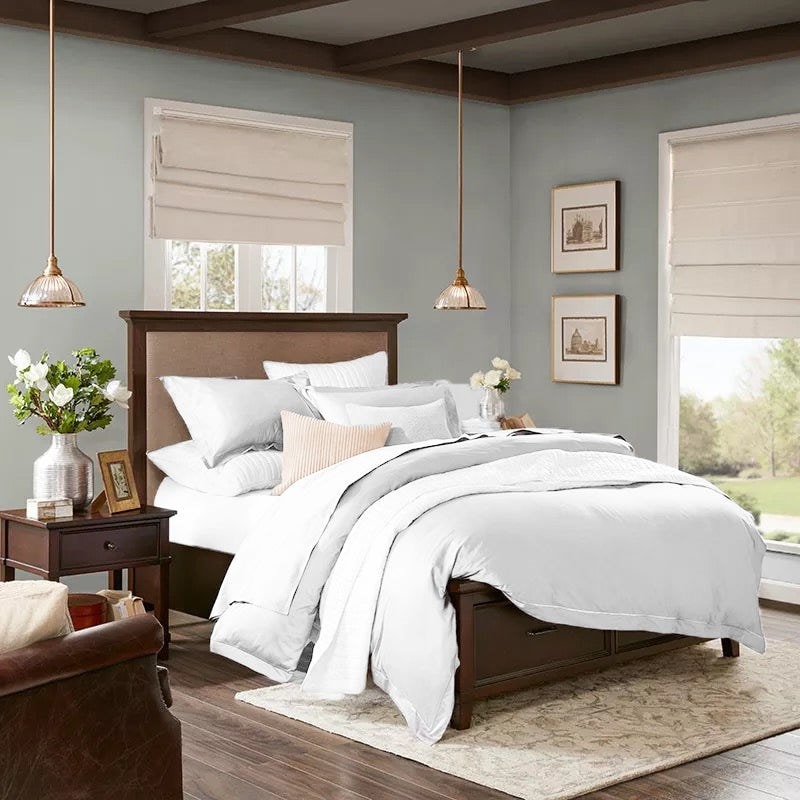
Absolute luxury, are the words that come to mind when you think of Egyptian Cotton. This material is made from a specific type of cotton grown in Egypt that has long-staple fibres. Staple fibres are the length of the actual cotton fibre. So, a longer staple fibre means a smoother quality fabric.
Pima Cotton
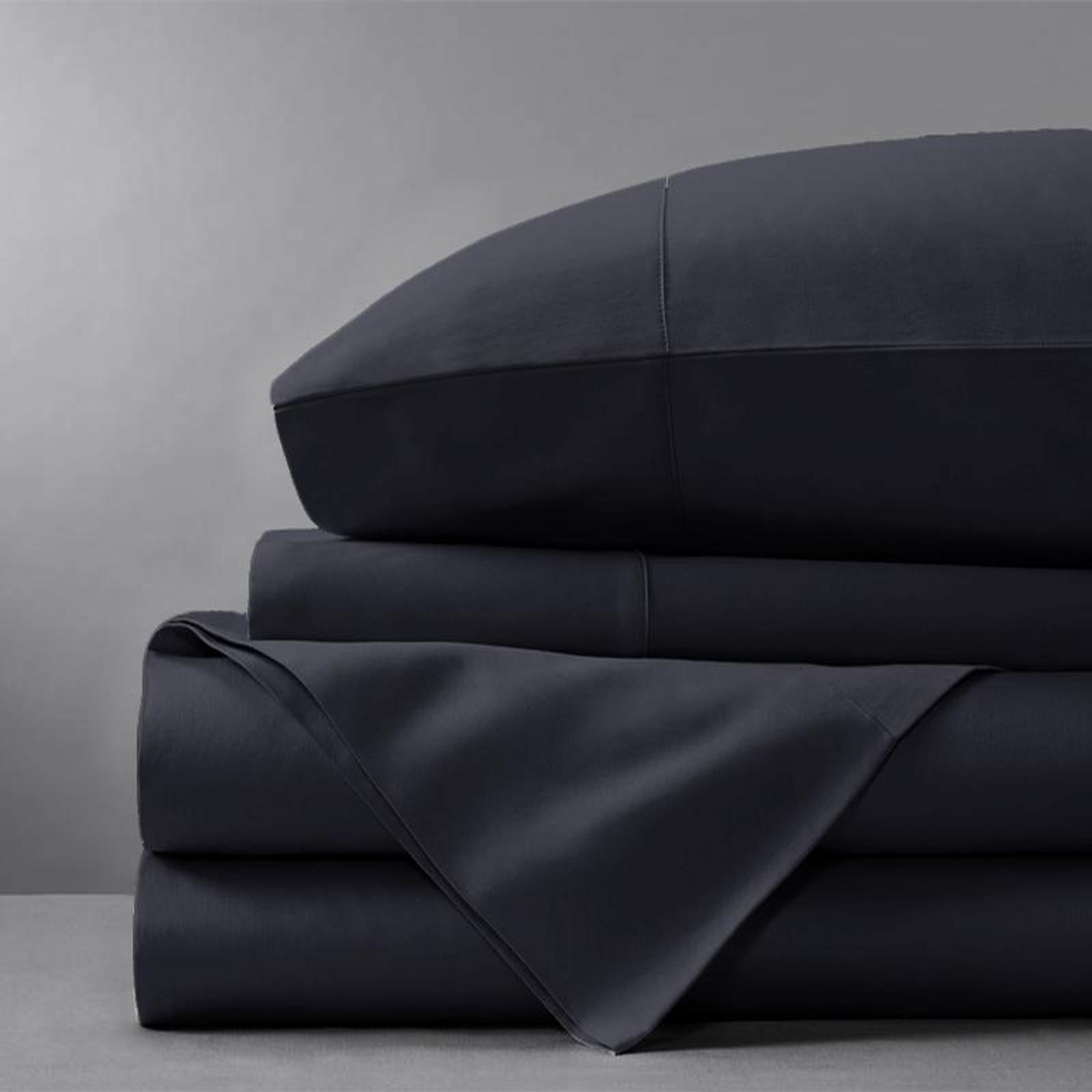
Grown from the same type of cotton as the Egyptian ones, Pima cotton is grown in America instead. Different climates and environments result in a different fabric. This is why Pima is slightly more affordable than Egyptian cotton.
The fabric is breathable and durable. It also contains long-staple fibres giving you a smooth fabric that feels like butter on the skin. Additionally, if the sheets say Supima cotton, it is the same material that has been approved by the Supima council.
Cotton Blend
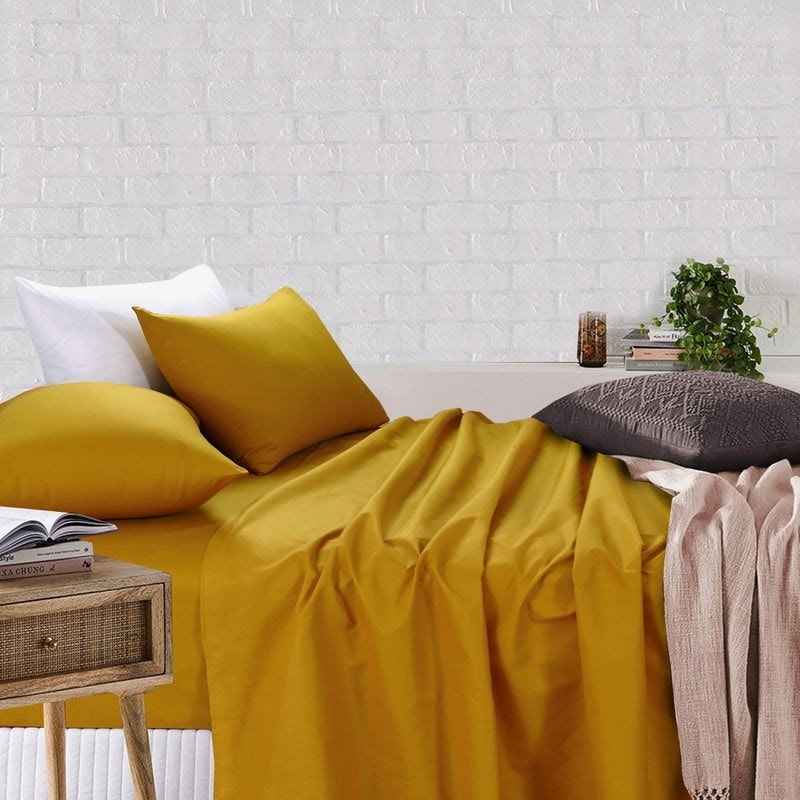
One of the most easily available bed sheet materials is cotton blend. It is ideal for people on a budget. Cotton blends consist of a mixture of cotton threads and synthetic threads that combine the best of both worlds. You get all the qualities of cotton material along with the benefits of synthetic fibres.
The material is usually wrinkle-free, easy to handle and wash. Synthetic materials are cheaper than cotton, hence blends end up being on the cheaper side of the scale.
Silk

The luxury of having silk sheets is that you are assured a good night’s sleep. Silk sheets are not always about luxury though. Most of the time, silk sheets are used to avoid skin irritation. If you have a skin condition choosing the right sheets makes a lot of difference.
Silk is very gentle on the skin. This is the reason why it is often recommended to use silk pillowcases for people with skin conditions. While it doesn’t drastically improve your skin, it also doesn’t irritate the skin. However, keep in mind that maintaining silk sheets can be very time-consuming.
Polyester
This material is very easy to handle and affordable. Polyester is resistant to stains, wrinkle-free and easy to wash as well. However, these sheets are not durable and don’t feel half as good as materials like cotton or linen.
Polyester might be a cheaper alternative but the material cannot absorb moisture and might irritate your skin. It is not the best material in the market, but if you need sheets that are cheap, Polyester is the best choice.
Bamboo

Environment-friendly sheets are definitely a trend you should try out. Bamboo sheets are made from bamboo fibres and are great for the environment and you. This material is surprisingly affordable, long-lasting and comfortable.
It is good for any weather conditions and will regulate your body temperature as well. However, this material wrinkles easily. So, if you’re a fan of keeping your bed looking perfect and wrinkle-free, this material might be problematic.
Weave
The weave of the fabric determines how the material feels against your skin. Choosing the right weave can be very important. It also makes it easier to understand thread count once you know which weave you’re selecting.
Percale
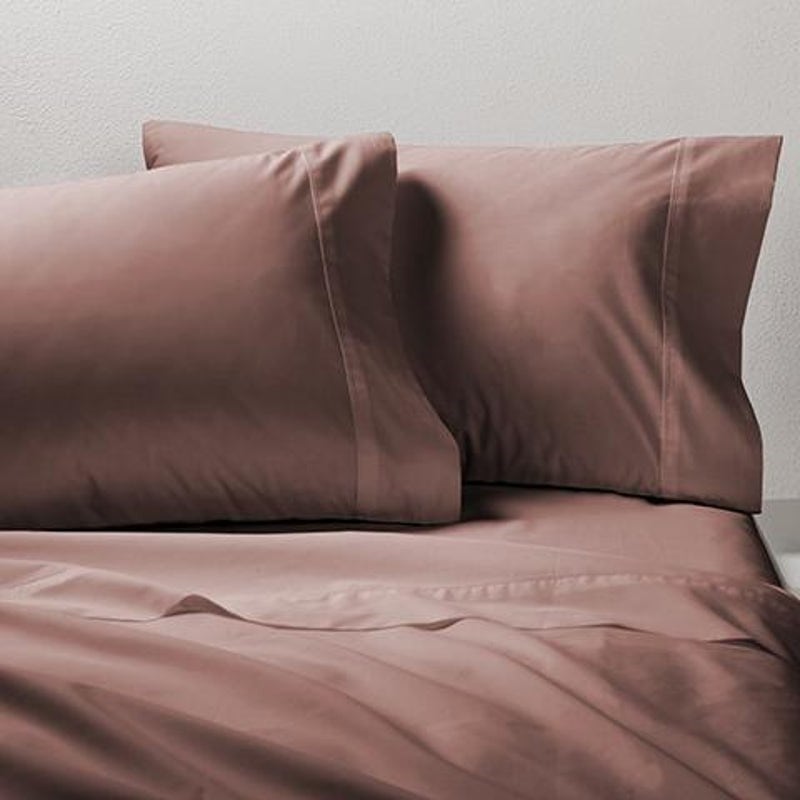
The traditional criss-cross pattern is sometimes the best option. Percale weave uses a simple pattern that is woven closely to give you a smooth bed sheet. The thread count for these starts from 200 and can go higher depending on the material being used.
Sateen

If you want a bed sheet that feels like clouds, a sateen weave is what you’re looking for. Unlike a criss-cross pattern, the threads are woven under one and over three. This alternating pattern results in a fabric that is extremely soft.
Flannel

You will most likely find this pattern in cotton. The flannel weave looks rough but feels very soft on the skin. However, this weave is not lightweight, it can range from medium to heavy making it perfect for colder weather.
Jersey Knit
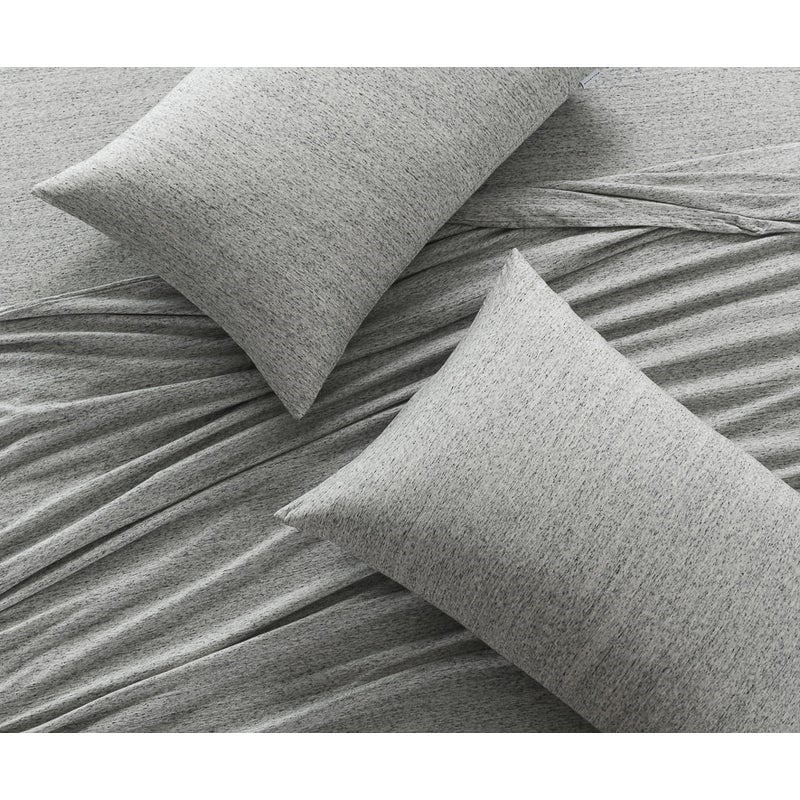
Don’t you love those comfortable cotton t-shirts that are perfect for any occasion? Jersey Knit weaves give you the same texture as a cotton t-shirt. It is stretchable, durable and very soothing on the skin.
Get Your Perfect Sheet Sets
There is a lot to take into consideration when choosing the right sheet sets for your bed. However, once you have the basics down making a selection is easy. Also, go with your gut. Nobody can tell you what suits your needs better than you. So, stick to your budget, make a note of the material you think is best, measure your mattress and then buy a sheet set that you like.


